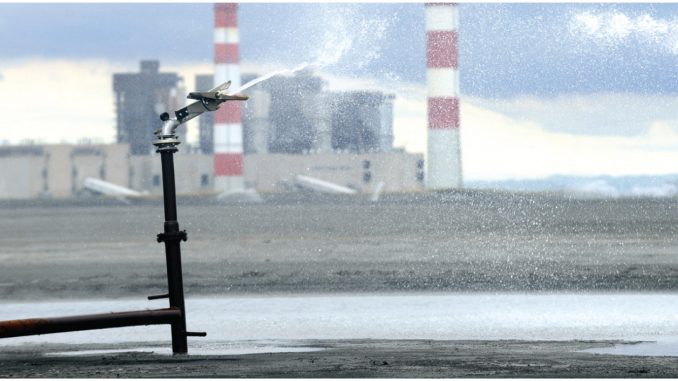
The disposal of ash, a by-product of power generation from coal-fired power plants, has been a key area of concern for the thermal power industry. The majority of the ash generated in thermal power plants (TPPs) is fly ash, or extremely fine ash. The granularity of fine ash particles enables their percolation in the atmosphere, leading to pollution. Around 85 million tonnes of fly ash was generated by 144-odd TPPs, as per a Central Electricity Authority (CEA) study in 2016-17 (for the first six months).
The Ministry of Environment, Forest and Climate Change has been issuing mandates since 1999, prescribing targets for the use of fly ash by TPPs, with an aim to achieve 100 per cent ash utilisation in a phased manner. These were subsequently amended in 2003, 2009 and 2016. As per the 2009 notification, all coal/lignite-based power plants as well as expansion units in operation before the notification date (November 3, 2009) were required to achieve a utilisation level of at least 50 per cent of fly ash generated within one year of the issue of the notification, at least 60 per cent within two years, 75 per cent within three years, 90 per cent within four years and 100 per cent within five years. However, several plants failed to achieve the prescribed targets and thus, in the January 2016 amendment, the timeline to achieve 100 per cent fly ash utilisation was extended to December 31, 2017.
Key trends in ash utilisation
The CEA has been monitoring the status of fly ash generation and its utilisation since 1996. The CEA’s latest report for the first half of 2016-17 presents a holistic view of fly ash utilisation by 144 power stations across various utilities.
As per the report, in the first half of 2016-17, the total fly ash utilisation level stood at 57.9 per cent, an improvement over the 56.04 per cent level achieved during the same period in the previous fiscal (which covered 132 power stations). However, in 2015-16, the utilisation level was higher at 60.97 per cent.
A state-level analysis of 18 states indicates that Delhi topped the list with a fly ash utilisation of 167.3 per cent while three states – Gujarat, Haryana and Rajasthan – recorded utilisation levels of more than 100 per cent. The remaining 14 states, however, fell short of achieving their targets.
Utility-wise, of the 70 power utilities analysed, 18 utilities exhibited fly ash utilisation of 100 per cent or more, while 22 utilities recorded utilisation levels of 75-100 per cent.
At the power station level, 44 of the 70 power stations registered fly ash utilisation levels of 100 per cent and above in the first half of 2016-17, of which 23 power stations achieved fly ash utilisation levels of greater than 100 per cent.
As far as the mode of utilisation was concerned, the CEA’s report indicates that the utilisation of fly ash is the highest in the cement sector with 24.04 per cent of the total fly ash used, followed by bricks and tiles at 7.37 per cent. The concrete industry segment has the lowest level of utilisation at 0.6 per cent.
The way forward
The current utilisation levels highlight the fact that fly ash utilisation remains inadequate and greater efforts need to be stepped up to meet the desired targets. There is an urgent need to ensure that fly ash is used in an environmentally compatible manner. The renovation and modernisation of coal and lignite plants must include technological advancements that enable them to store dry fly ash so that it can be made available to users in dry form. Further, in order to lower their water footprint, TPPs need to switch from the low-concentration slurry disposal method, which involves excessive water usage, to the high-concentration slurry disposal method, which is more environment friendly.
Also, regulations should be introduced to encourage the use of fly ash in the construction of embankments for laying railway lines. The use of fly ash in agriculture and waste development has been fairly low, primarily owing to the presence of heavy and radioactive elements in fly ash. These concerns need to be addressed in order to realise the huge potential of fly ash in this segment.
In sum, there is huge potential for utilising fly ash in various industries and the country needs to develop appropriate guidelines and strategies that take it closer to achieving its goal.
